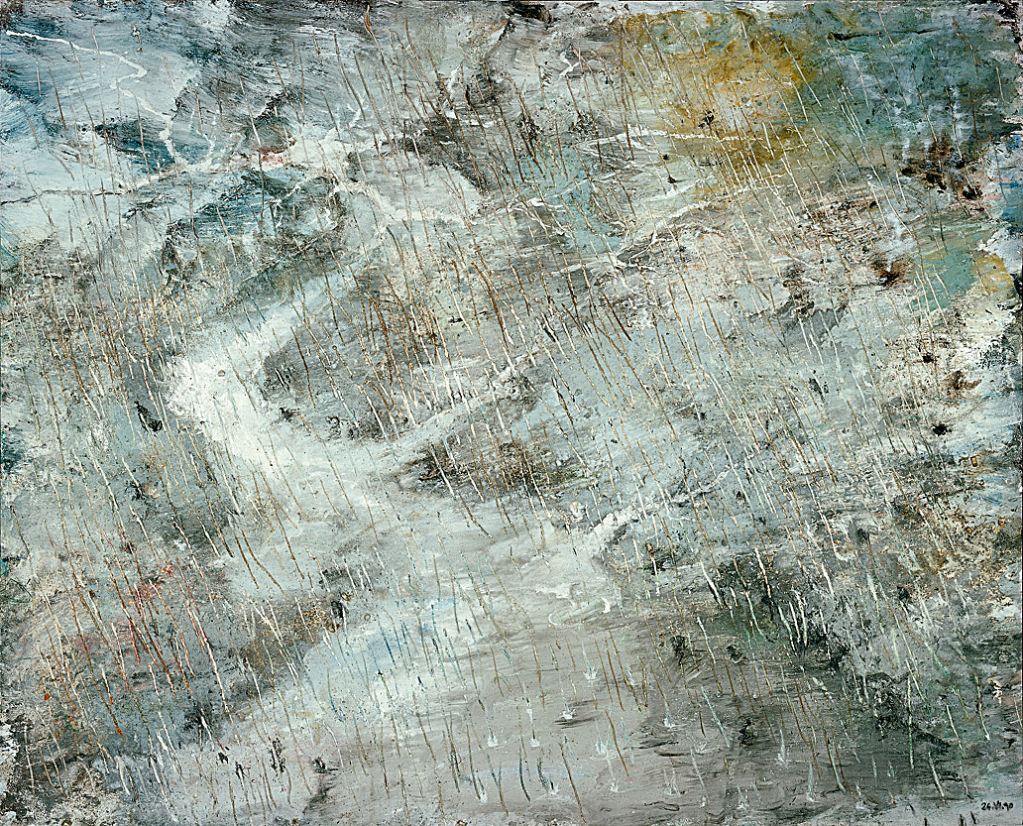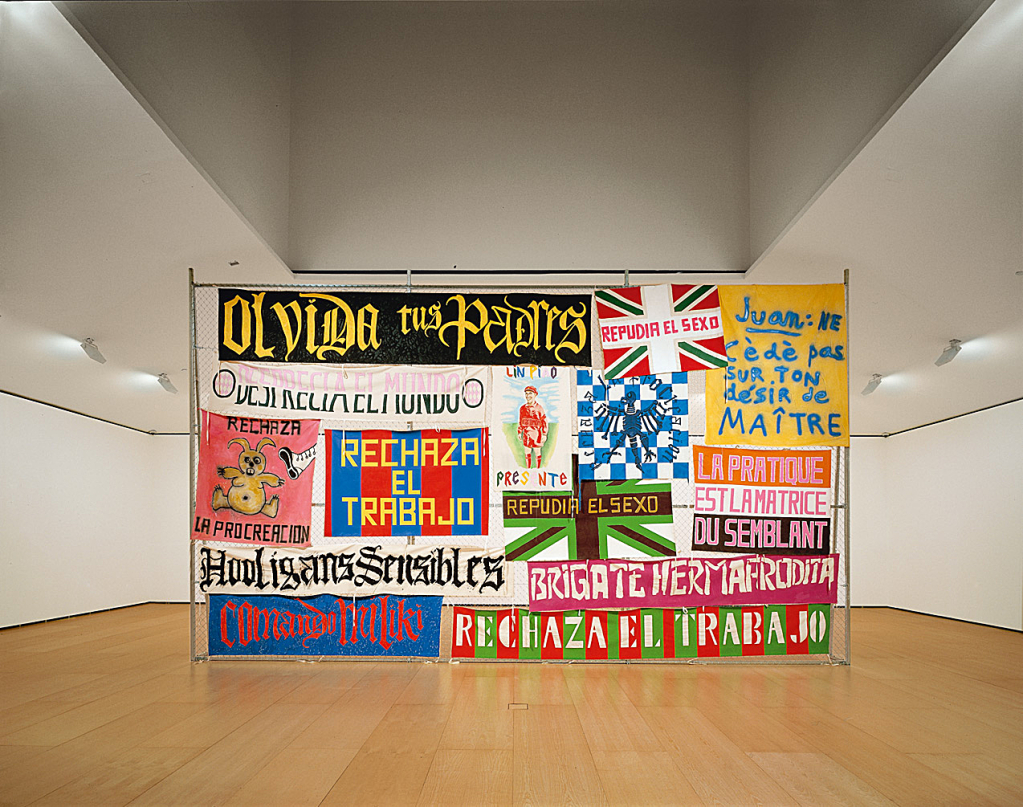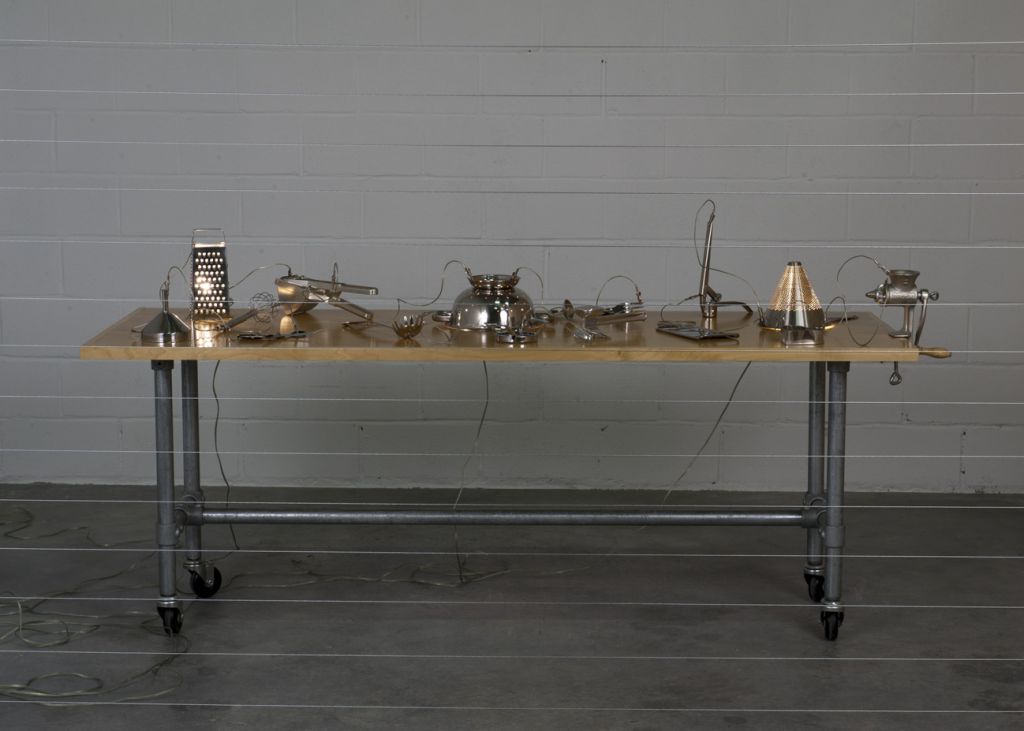Male and Female Goats
1992Mixed media on canvas297 x 250.5 x 6 cm
Miquel Barceló was one of the foremost representatives of Spanish Neo-Expressionism in the early 1980s, together with painters such as Ferrán García Sevilla, Miguel Ángel Campano, Juan Navarro Baldeweg, and José María Sicilia. This so-called return to painting in Spain occurred after other similar movements had begun in Italy, Germany, Austria, and the United States.
In his years of consolidation, Barceló's work was characterized by large formats and thick layers of materials. Barceló added unusual materials to his paintings, such as marine algae, volcanic ash, foods (flour or rice, for example), and different waste materials, including cardboard boxes and cigarette butts, and he painted his canvases on the floor. In the mid 80s he began to eliminate narrative elements in his paintings and the principal themes in his work became light, holes, and transparencies. This process of simplification culminated in the white paintings, a prolific series the artist created between 1988, a year in which the traveled across the Sahara from Algeria to Mali (where he acquired a house and studio that he still uses today).
Male and Female Goats (Cabrit i cabrida) belongs to a series of paintings whose theme revolves around the representation of hung or sacrificed animals, such as Le Bal des pendus and Blanc de zinc, Blanc de plom. As in the latter works, one can observe influences not only from the still lifes with hanging fruits by the Spaniard Juan Sánchez Cotán, but also from those of the Renaissance and Baroque periods, as well as Dutch and Flemish paintings, such as the skinned animals by Rembrandt. At the same time, this painting is a reference to daily life in the countries of sub-Saharan Africa, with their markets full of hanging animals, which suggest death and rot rather than food. Just as the still lifes of the Renaissance and Baroque periods can be read as allegories to the passage of time, these paintings, based on Barceló's knowledge of the precariousness of life in sub-Saharan Africa, can be read more as emblems of the fragility of the new African states, where the problem is not realizing that life passes quickly, but managing to subsist on a daily basis. Even so, Barceló distances himself from all of the above in order to give these works a celebratory air, of animist ritual, which can lead us to metaphysical reflections: everything that is alive will decompose, but will be born again.
Original title
Cabrit i cabrida
Date
1992
Medium/Materials
Mixed media on canvas
Dimensions
297 x 250.5 x 6 cm
Credit line
Guggenheim Bilbao Museoa Gift, Bruno Bischofberger, Zurich






